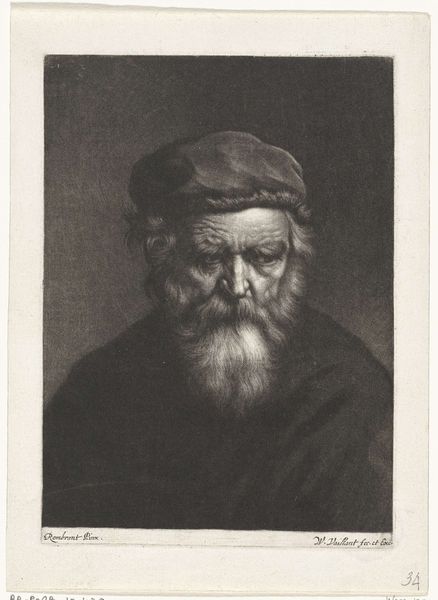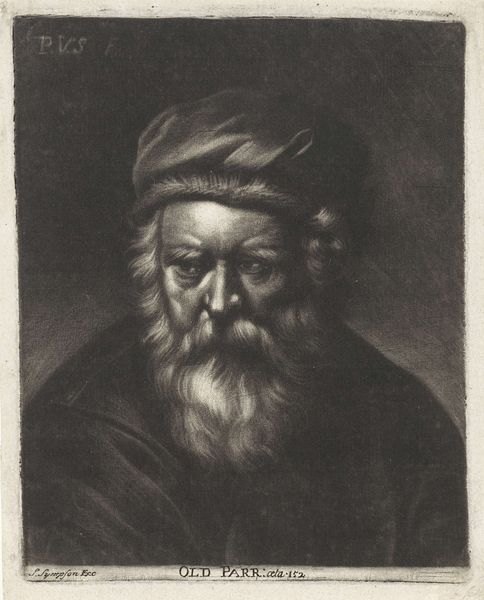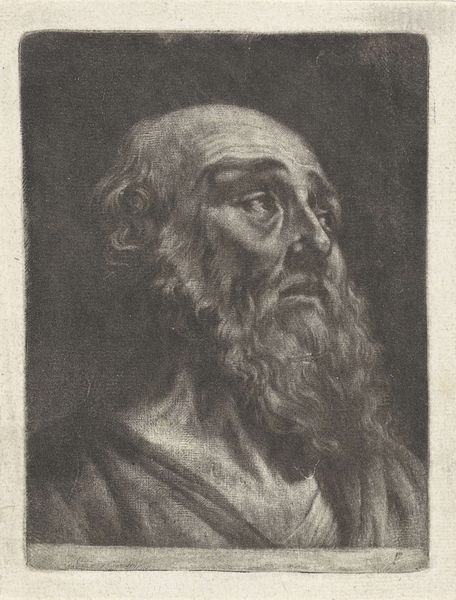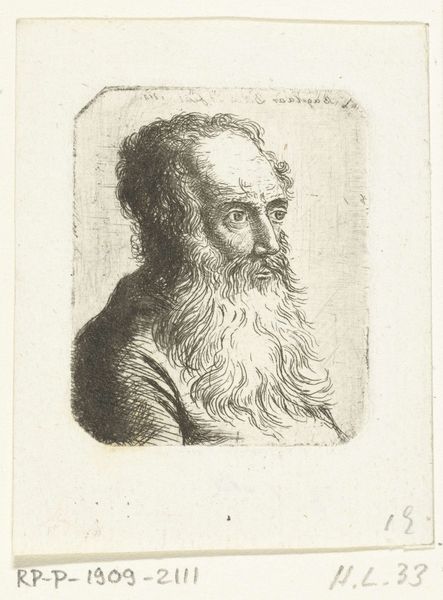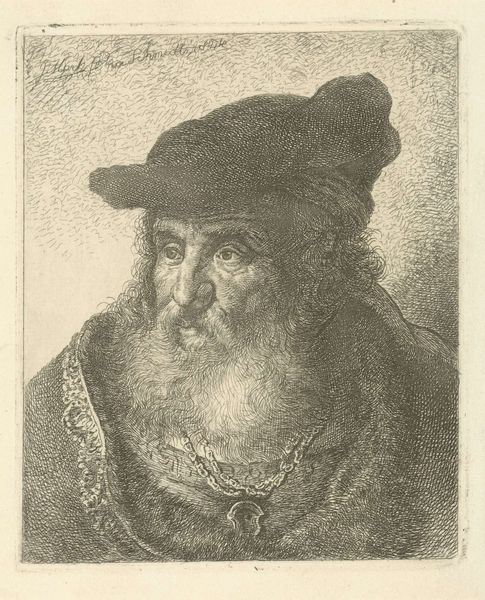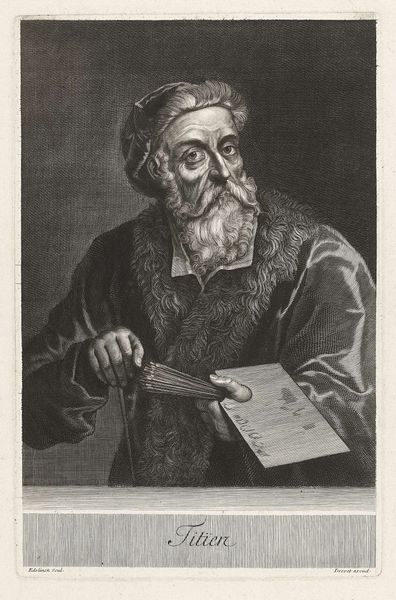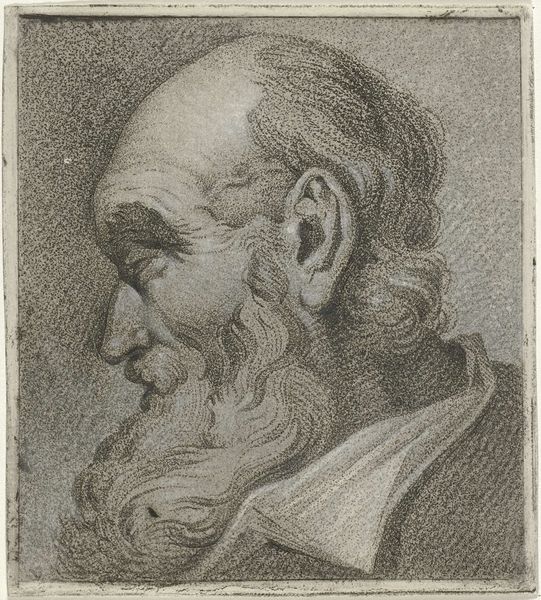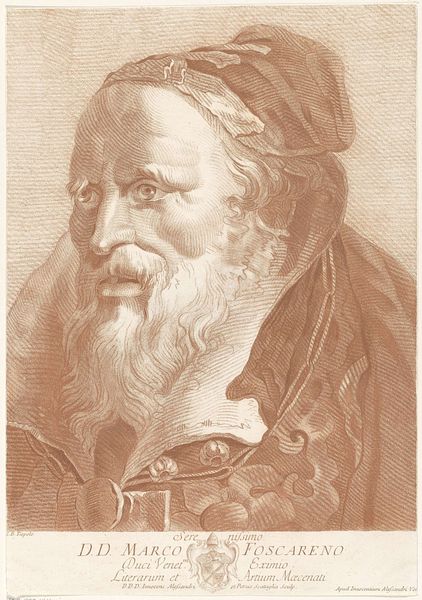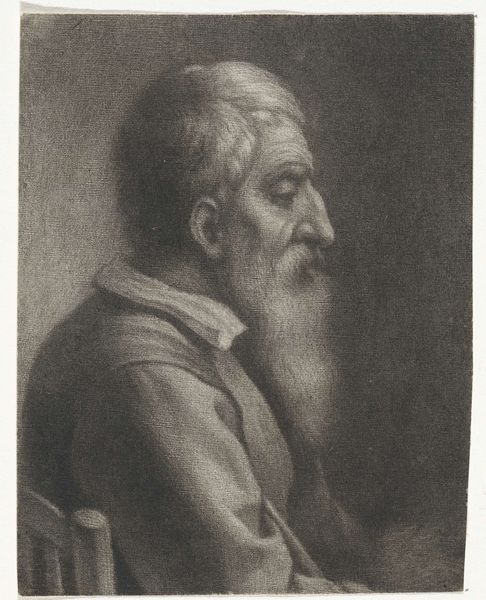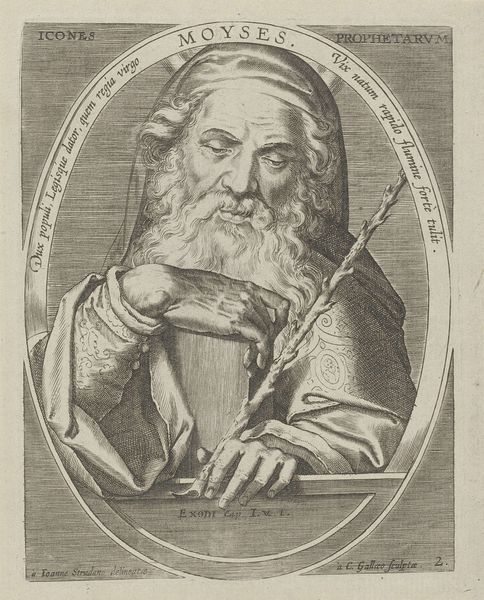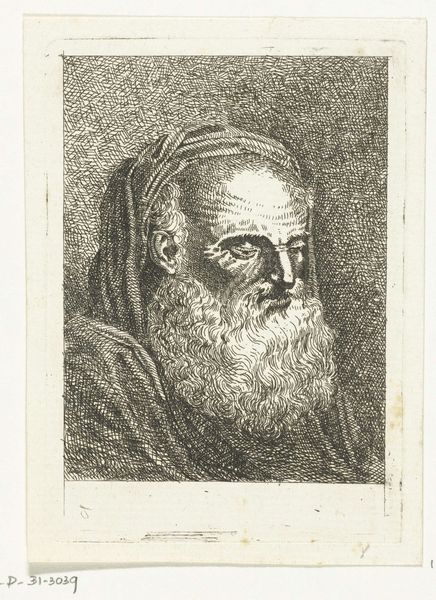
drawing, paper, ink
#
portrait
#
drawing
#
baroque
#
paper
#
ink
#
history-painting
Dimensions: height 173 mm, width 118 mm
Copyright: Rijks Museum: Open Domain
Curator: This image arrests me right away – this fellow looks as if he knows all the secrets of the universe and isn’t about to let on. A beautiful grittiness about it too. Editor: You've picked up on the image’s gravitas perfectly. This drawing, attributed to Bernard Picart around 1699, now resides at the Rijksmuseum. It's titled “Portret van de schrijver Lucianus van Samosata”—a portrait of the writer Lucian of Samosata. The artist worked with ink on paper, if you want to focus more on its structure and build. Curator: Oh, Picart really caught the spirit. Lucian had such a sharp wit, slicing through hypocrisy with his pen, and this captures that knowing glint in his eyes, don't you think? You can sense that mischief. It seems pretty intense. Editor: Indeed. The work embodies features from the Baroque style: drama and richness. You see how light and shadow sculpt Lucian's face, intensifying his gaze and imbuing him with a sense of vitality. Look at the detail in the rendering of the beard. Curator: His hands feel massive too – that's great. But I love the asymmetry. It's in the set of his lips. Not trying to present a 'perfect' image – a truthful image maybe. And the cap - it's very cool, and simple - draws your eye up towards the face so the other qualities hit you harder. What about its wider importance? Does the drawing, or the choice of Lucian, suggest anything to you? Editor: Absolutely, I see your point. Remember, Lucian, though Greek, wrote during the Roman Empire. He explored the friction between Greek and Roman identity. His works satirized philosophical and religious pomposity – a theme ripe for the Baroque era when tensions between faith and reason were reaching a boiling point. By presenting us with Lucian, Picart also highlights the relevance of antiquity in contemporary discussions about faith, reason and culture. Curator: Thank you, it certainly enriches the work to learn some more about that background. Now it's stuck in my mind; what a drawing like this can achieve by saying so little, just paper, ink, and an eye for the soul. Editor: An apt conclusion! The piece not only immortalizes a historical figure but also invites a continuous dialogue between the past and the present.
Comments
No comments
Be the first to comment and join the conversation on the ultimate creative platform.
